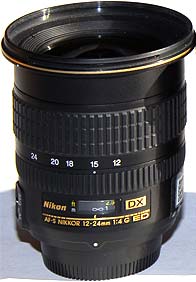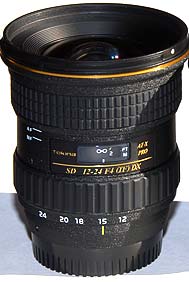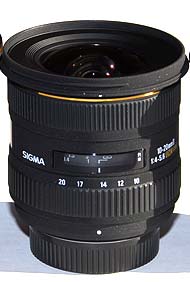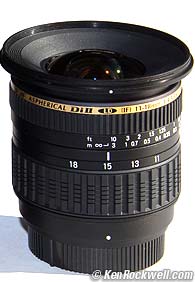Home Search Gallery How-To Books Links Workshops About Contact
Optical
Specifications and Performance
© 2006 KenRockwell.com
 |
 |
 |
 |
Nikon 12 - 24
mm f/4, Tokina 12 - 24 mm f/4, Sigma 10 - 20 mm f/4 - 5.6 and Tamron
11 - 18 mm f/4.5 - 5.6.
Click an image to get it from Adorama.
Also try Amazon.
It helps me if you get yours at either one.
|
Optical Specifications
* Most manufacturers make claims for some sort of magical image quality enhancing glass. Nikon started it in the 1970s with their ED glass for super telephotos. Each maker uses different acronyms. You can ignore this, since each maker also has different standards of what constitutes magic glass. ** The more the merrier. Sigma's six is primitive. Nikon and Tamron's seven is standard. Tokina's nine is heavenly. This means you may get exquisite 18-pointed stars on brilliant highlights like points of light at night on the Tokina, compared with 14 points on the Nikon and Tamron and a tacky six on the Sigma. Sigma got cheap. Optical Performance Optical performance is difficult to evaluate with zooms, and especially with wide angle zooms. Minute variations in the alignment of internal optical elements have huge image effects. This is especially critical with wide lenses because the focal lengths are so short. Small variations have much larger effects than they do with longer lenses. Zooms lenses almost always have play designed into their mechanics. The optics are in slightly different positions every time you focus or zoom. Therefore they give different performance for each shot! A key to a great lens is precision, and precision which is maintained with wear and use. This leads to consistency from shot to shot and from year to year. Crummy lenses may test well when new, but get worse as their zoom assemblies wear and lose their tolerances. My Nikon 12 - 24 is 2 years old and the other three are brand new. This puts the Nikon at a disadvantage. I have attempted to compare sharpness among these lenses. As you will see there is no easy comparison because some lenses give different performance in one corner or another. Various aberrations effect sharpness in different ways. When you see the results you'll see how tough it is to chose a winner among the various examples. Zooms can vary from shot to shot. I attempted to chose representative shots for all. I cover sharpness and distortion on their own pages ahead. Aperture Roundness All the aperture blades should close and open equal amounts regardless of the selected aperture. In reality a lack of microscopic precision may cause some diaphragm blades to stop down more or less than others. This leads to unround apertures. This has no direct effect on the image, unless you have ghosts showing the shape of the aperture. It mostly shows the precision with which the lens is manufactured.
Internal Optical Cleanliness This has little effect on the image. It's more an observation of how carefully the lenses are ground and assembled. Junk inside a lens can effect the image if you have bright lights shining into the lens.
Next: Sharpness |
Home Search Gallery How-To Books Links Workshops About Contact

